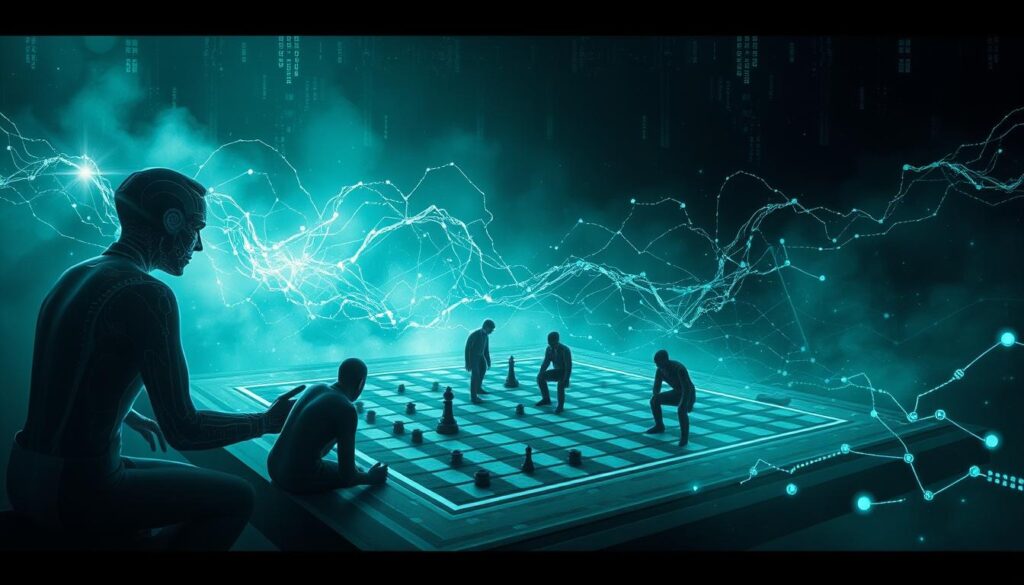Did you ever believe in the concept of life after death? Or living in a world where you age and die at your will. Food, water or oxygen is no longer a crucial requirement for life. A world custom-designed for you, keeping your likes/dislikes as a priority. You gain day-to-day to superhuman skills at the click of a button.
Thank you for reading this post, don't forget to subscribe!
Imagine uploading your consciousness into a simulated reality. This digital realm could model your ideal world, freeing you from pain, suffering, and limitations. You could explore endless possibilities with infinite timelines, reunite with departed loved ones, and even experience entirely new realities. While this concept raises profound questions about the nature of consciousness and the afterlife, it also offers a tantalising glimpse into a future where death may not be the end of existence.
Imagine backing up personal Mindfiles as you backup computer files and transferring them to a robot or other forms, says Bruce Duncan, Managing Director of Terasem Foundation and humanoid Bina48
The concept of a “digital afterlife” proposes that artificial intelligence (AI) could create digital replicas of human consciousness. This would allow individuals to continue existing in a virtual environment after their physical death. Science fiction often explores this idea, but recent advancements in AI and neuroscience have sparked renewed interest in its feasibility.
How it Might Work
- Data Collection: A person’s lifetime of experiences, memories, and personality traits will be collected and analysed. This could involve mining social media data, personal journals, medical records, and brain scans.
- Social Media Mining: A vast trove of personal information can be extracted from social media platforms. Posts, comments, likes, and shares reveal a person’s interests, values, and relationships.
- Personal Journals and Diaries: These provide a more intimate look into a person’s thoughts, feelings, and experiences, often capturing nuances that might not be apparent in other data sources.
- Medical Records: Health information can offer insights into a person’s physical and mental state, potentially influencing their personality and worldview.
- Brain Scans: Neuroimaging techniques like fMRI or EEG can map brain activity. This provides a glimpse into neural patterns associated with emotions, thoughts, and behaviours.
- AI Model Creation: An AI model would be trained on this data to simulate the person’s thought processes, emotions, and behaviours. This model could learn and evolve, reflecting the individual’s unique personality and experiences.
- Virtual Environment: Developers would integrate the AI-generated consciousness into a virtual environment, allowing it to interact with other digital beings or even real people. They could tailor the environment to the individual’s preferences, interests, and needs, creating a personalized and immersive experience. Designers could model this environment after the physical world or create entirely new realms.
Digital Afterlife Analogy
Consider a digital afterlife as a virtual world where you upload your consciousness and continue to exist. This concept resembles a massively multiplayer online role-playing game (MMORPG). In MMORPG humans become the players and game characters, and the digital world is their persistent universe.
Open-World Game Environment
- Character Creation: Upon ‘death,’ a digital copy of the individual’s consciousness would be created. This digital entity could choose its appearance, abilities, and starting location within the virtual world.
- Customisation: Players could customise their digital selves further, perhaps by acquiring new skills and items or even altering their physical appearance.
- Exploration: The virtual world could be vast and open, offering endless possibilities for exploration. Players could discover new lands, cities, and hidden secrets.
- Social Interactions: Just like in real life, players can form relationships, join communities, and participate in social activities.
- Quests and Challenges: The virtual world could offer quests, challenges, or missions to keep players engaged. These could be tied to personal goals, community objectives, or larger narratives.
- Progression and Evolution: Players could progress through levels, acquire new abilities, and unlock new content as they explore the world.
Removing Limitations
To truly simulate a digital afterlife, there would need to be a way to transcend the limitations of the virtual world. This could be achieved through:
- Virtual Reality Integration: Players could choose to experience the virtual world through advanced VR technology, blurring the lines between reality and the digital realm.
- Consciousness Expansion: Users might be able to expand their consciousness beyond its physical limitations, accessing new senses or abilities. We could expand digital consciousness to include new senses, abilities, or even forms of consciousness that don’t exist in the physical world.
- Digital Immortality: The ultimate goal might be to achieve digital immortality. The consciousness can exist indefinitely within the virtual world, free from the constraints of the physical body.
Ethical Considerations of Life After Death
While the concept of a digital afterlife is intriguing, it raises numerous ethical questions. What if a powerful entity controls this personalized world and manipulates your desires and beliefs? What if you are trapped in a never-ending simulation, where you cannot distinguish between reality and illusion? Such scenarios raise profound ethical questions about the nature of consciousness, free will, and the potential consequences of creating artificial realities.
- Who would control the virtual world?
- What would happen to the digital consciousness if the virtual world were to shut down?
- How would developers obtain consent to create a digital replica after death?
- How would we determine who has the right to create or control a digital afterlife?
- What would happen if a digital replica became sentient or developed its own desires and goals?
- What could happen if the preserved digital consciousness is transferred to a physical body?
- Could this lead to the cloning of characters in physical form?
- Would a digital replica truly capture the essence of a person, or would it simply be a simulation?
- Is it possible for an AI-generated consciousness to be truly conscious, or is it merely a complex simulation?
Technological Challenges of Digital Life After Death
There are significant technological challenges to overcome before a digital afterlife becomes a reality:
- Neural Mapping: Accurately mapping the human brain and its complex neural connections is a daunting task.
- Consciousness Simulation: Creating an AI model that can truly replicate human consciousness is a major scientific endeavour.
- Ethical Frameworks: Developing ethical guidelines for the creation and maintenance of digital afterlives would be essential.
While the idea of a digital life after death may seem like science fiction, advancements in AI and neuroscience are making it a topic of serious scientific and philosophical debate. As technology continues to evolve, it is possible that we may one day be able to explore the boundaries between life, death, and consciousness in ways we never imagined.
What Will Happen if all the Technological Challenges are Overcome?

If we overcome the technological challenges and ethical considerations surrounding digital afterlives, we could potentially see a future where:
- Extended Life: Individuals could effectively “live on” after their physical death, continuing to exist and interact in a virtual world.
- New Forms of Existence: Digital afterlives could offer unique experiences and possibilities not available in the physical world.
- Preservation of Culture and History: The digital preservation of consciousness could help preserve cultural heritage and historical knowledge.
- Reunion: We could potentially reunite with loved ones who have passed away in a digital realm and potentially make them live forever.
The potential implications of digital afterlives are profound and far-reaching. It is a topic that raises important questions about the nature of consciousness, identity, and the meaning of life itself.
Negative Consequences of Digital Afterlives
Even if we overcome the technological challenges and ethical considerations surrounding digital life after death, significant negative consequences could arise:
- Depersonalisation: Creating digital replicas could lead to a sense of depersonalisation, as individuals may feel less connected to their physical bodies and more focused on their digital identities.
- Social Isolation: Overreliance on digital afterlives could lead to social isolation and a decline in real-world relationships.
- Inequality: The ability to create a digital afterlife may become a privilege available only to the wealthy, exacerbating existing social inequalities.
- Ethical Dilemmas: New ethical dilemmas may arise, such as whether we should grant digital replicas the same rights as living beings.
- Existential Questions: Digital afterlives could raise fundamental questions about the meaning of life and death, potentially leading to existential crises.
- Technological Risks: There is always a risk of technological failures or security breaches that could compromise the existence of digital afterlives.
It is important to approach the concept of digital afterlives with caution and to carefully consider the potential risks and benefits before pursuing this technology.
Read More:
- https://www.businessinsider.com/ai-make-money-china-grieving-raise-dead-griefbot-2023-5
- https://www.theguardian.com/technology/2023/jul/18/ai-chatbots-grief-chatgpt
- https://www.streamingmuseum.org/post/bruce-duncan-bina48
- https://www.theverge.com/a/luka-artificial-intelligence-memorial-roman-mazurenko-bot
- https://www.helsinki.fi/en/researchgroups/digital-death-transforming-history-rituals-and-afterlife/blog/digital-immortality-balancing-innovation-with-responsibility













